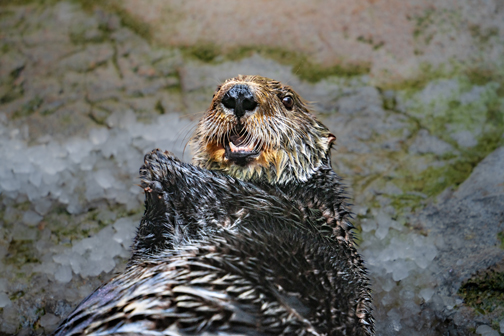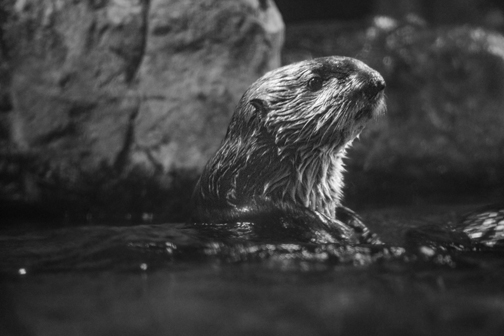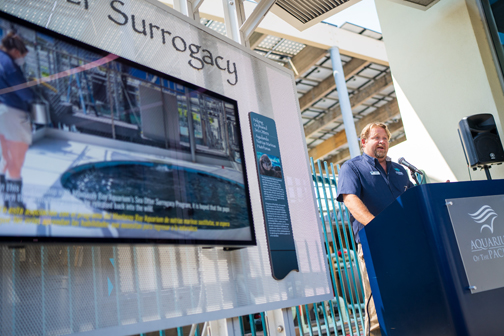

Photos by Charly SHELTON
By Charly SHELTON
The Aquarium of the Pacific (AotP) is excited to introduce a young sea otter, named 968, who is the first releasable rescued sea otter pup to be paired with a surrogate mother. The pup is being raised as part of the AotP’s comprehensive sea otter rescue and rehabilitation program. This initiative is a collaborative effort with the Monterey Bay Aquarium’s Sea Otter Surrogacy Program, designed to help stranded sea otter pups learn the essential skills needed for survival in the wild.
Megan Smiley, Sea Otter Program Manager at the Aquarium of the Pacific, explains the process of enriching the otters’ environment. “Everything we are doing is aimed at helping them gain experience necessary for foraging in the ocean,” Smiley said. The team creates simulated natural habitats, such as a mussel pylon filled with mussels and clams, to encourage the otters to forage as they would in their natural habitat.
The program places a strong emphasis on minimal human interaction to ensure the pups do not become accustomed to human presence. Smiley notes, “We wear a welder’s mask and a barber’s cape to hide our human form as we’re throwing food up and over,” emphasizing the importance of maintaining the otters’ natural wariness of humans.
Brett Long, senior director of birds and mammals at the Aquarium of the Pacific, highlights the significance of this initiative. “For the first time in the history of the Aquarium of the Pacific, a releasable rescued sea otter pup has been paired with one of our surrogate moms,” Long said. The goal is for the pup, rescued just north of Santa Cruz, to learn survival skills from Millie, an experienced surrogate mother. This pairing is vital as it helps the pup learn to groom, forage, and socialize — skills necessary for its eventual release back into the wild.

Since joining the Monterey Bay Aquarium’s program in 2020, the Aquarium of the Pacific has expanded its capacity to care for and rehabilitate stranded sea otter pups. This partnership has enabled the facility to house and care for up to four pups per year, effectively doubling the number of otters that can be prepared for release into the wild.
Sea otters play a crucial role in their ecosystems, Long said, acting as “ecosystem engineers” by controlling sea urchin populations and promoting kelp forest health. Their numbers have increased from a critical low of about 50 animals in the 1930s to nearly 3,000 today, but continued conservation efforts are essential for their recovery.
Through these efforts, the Aquarium of the Pacific aims not only to rehabilitate and release sea otters but also to educate the public about the importance of these animals and the challenges they face. This program is a testament to the commitment of the Aquarium and its partners to marine conservation and the recovery of this iconic species.
Millie and 968 are living happily out of human view at the Aquarium of the Pacific, but members of the media were invited backstage to see a live webcam view of the otters interacting with their environment. Guests at the Aquarium can learn more about the Sea Otter Surrogacy program at a dedicated informational display toward the back of the outdoor exploration space. And to see both the surrogate otters as well and get up close with the resident otters, check out our video on YouTube by searching Zipahdeedoodad, or by scanning the QR code attached to this story.

Photos by Charly SHELTON
